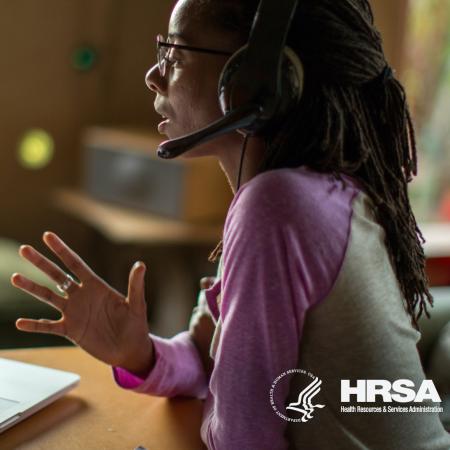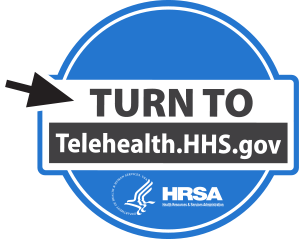
Many adjustments were made in 2020-2021 to facilitate the continued provision of HIV care and treatment during the COVID-19 pandemic. The lessons they offer for future service delivery are summarized in a new “white paper” by the Health Resources and Services Administration’s HIV/AIDS Bureau (HRSA HAB).
The white paper, Innovation and Resilience: How Ryan White HIV/AIDS Program Recipients Leverage Telehealth during the COVID-19 Pandemic, focuses on telehealth and HIV care delivery best practices and lessons learned as identified by the workgroup through interviews with seven RWHAP recipients at state and local levels.
The white paper was prepared by a HRSA HAB Telehealth TA Workgroup, first convened in mid-2020 to develop TA materials for RWHAP recipients on telehealth. (See the sidebar for HRSA and other federal resources on telehealth, developed prior to and in response to COVID-19.)
Innovations in Telehealth Delivery
RWHAP recipients provided a range of insights on how they rapidly adjusted their HIV programs to adopt and/or expand telehealth services to keep clients engaged in HIV care and treatment and even improve connections within them, particularly in times of social distancing and isolation. Among the highlights:
- Partner Coordination. Working with other programs helped connect unhoused individuals with telehealth, like work with HOPWA-funded agencies to get cell phones in the hands of clients.
- Phone-Based Telehealth. Telehealth expanded beyond the traditional use of video conferencing. According to the white paper, “the majority of clients opted for telephonic visits.” This provided more flexibility to patients and avoided the technological requirements and learning curve associated with traditional telehealth equipment.
- Various Telehealth Options. A broad range of telehealth techniques were adopted, like use of Bluetooth stethoscopes at a satellite site, giving patients and providers more flexibility in conducting a physical examination.
- Telehealth Use for Multiple Purposes. Telehealth sessions went well beyond basic clinic encounters to encompass, for example, tele-behavioral health, nutrition counseling, medication adherence, and sexual health counseling.
Interviewed sites consistently reported that telehealth led to significant improvements in no-show rates. One site, for example, saw a no-show decline from 20% to 13% over the first five months of the pandemic.
- Maximizing Social Distancing. Programs made notable allowances, like 90-day prescription fills to minimize pharmacy and clinic visits; securing patient consent electronically; and completion of eligibility and recertification paperwork via electronic means.
- Remote Diagnostic Collections. Programs increasingly used vendor services to collect and process diagnostic tests, cutting down on client trips to the clinic.
Telehealth was not the standard practice for every patient. Some programs conducted in-person visits for newly diagnosed individuals, within 48 hours of a positive test result, in order to establish a firm connection with patients.
The Back Office: Policies, Procedures, Staffing
Best practices in HIV service delivery via telehealth would not have been possible with adjustments in clinic procedures, from workflows to payment procedures. The white paper identified steps taken by RWHAP recipients such as the following:
- Policies and procedures were rapidly revised to guide clinic staff, like standardized intake protocols and measures to ensure compliance with regulatory and reimbursement requirements.
- Programs worked closely with IT staff to ensure privacy and confidentiality of patient records in newly established telehealth services.
- “Dynamic practice managers” were essential in quickly developing procedures to align with new regulatory and billing requirements.
- Programs took steps, early on, to keep good records of time spent on telehealth as “most third-party payers’ codes and rates were inadequate to account for the level of service being furnished via telehealth.”

